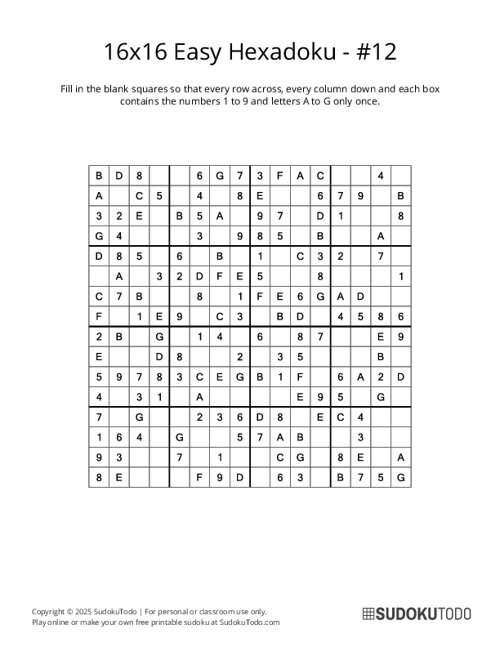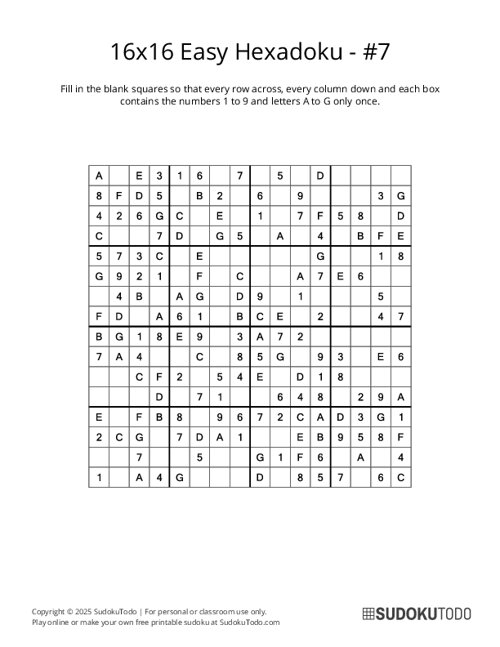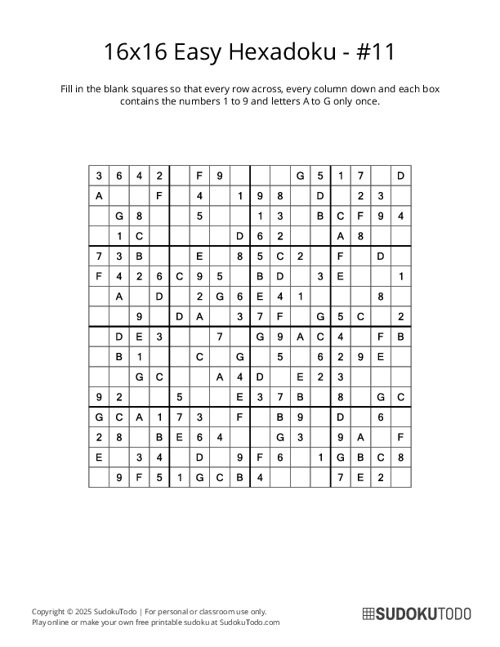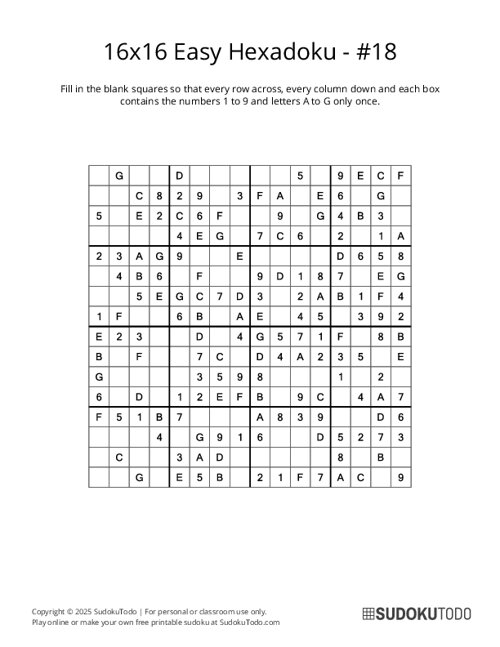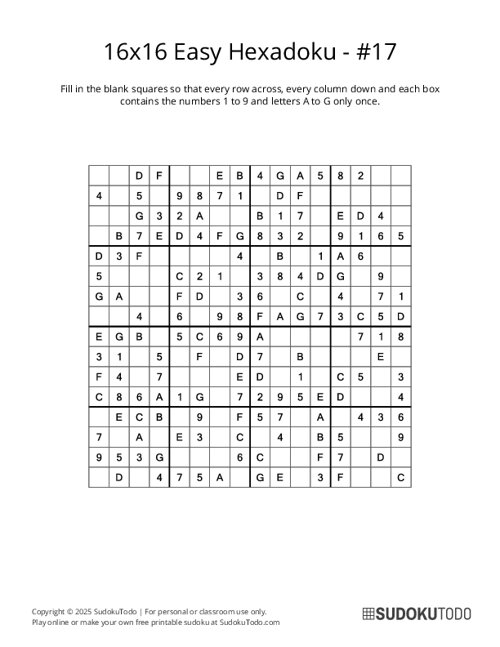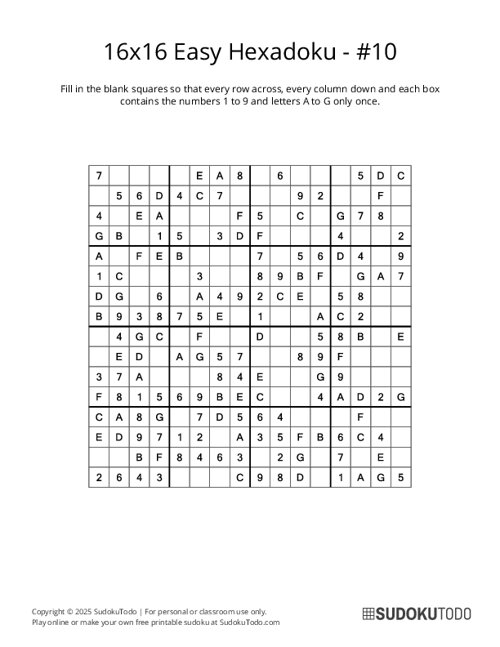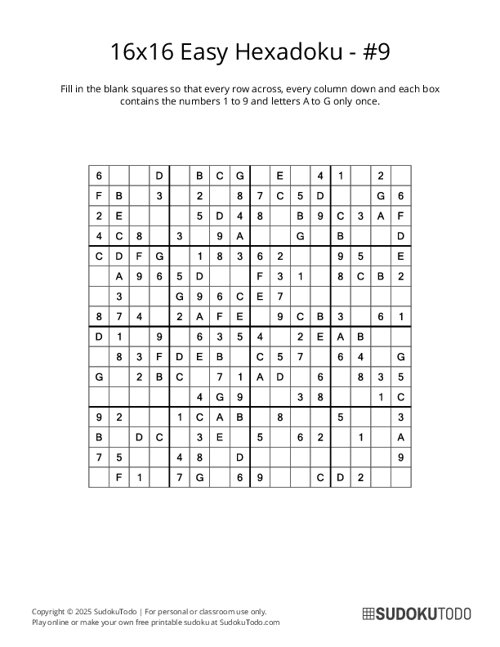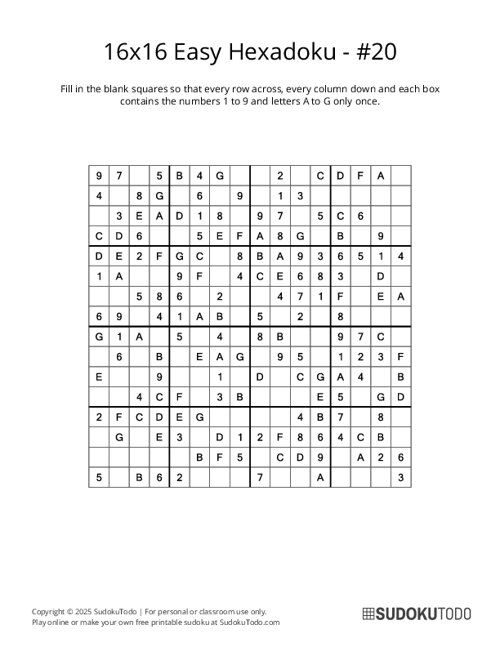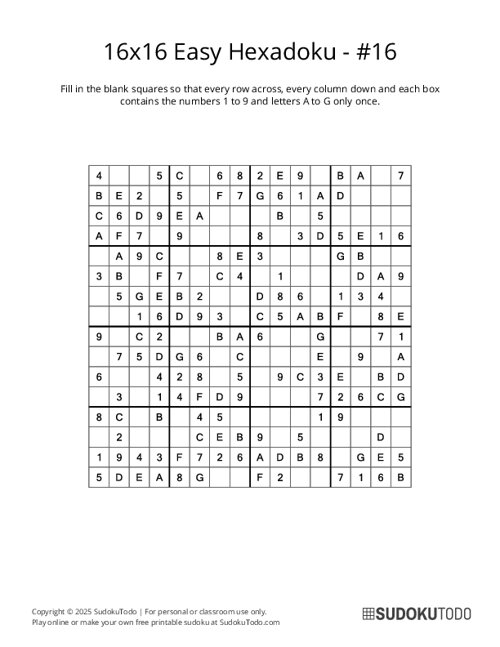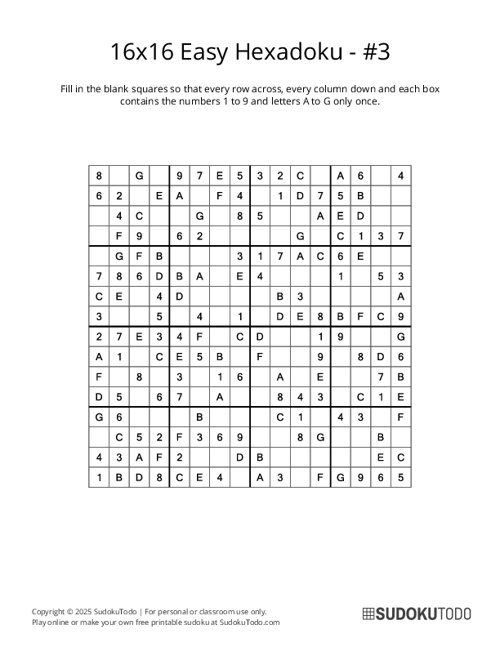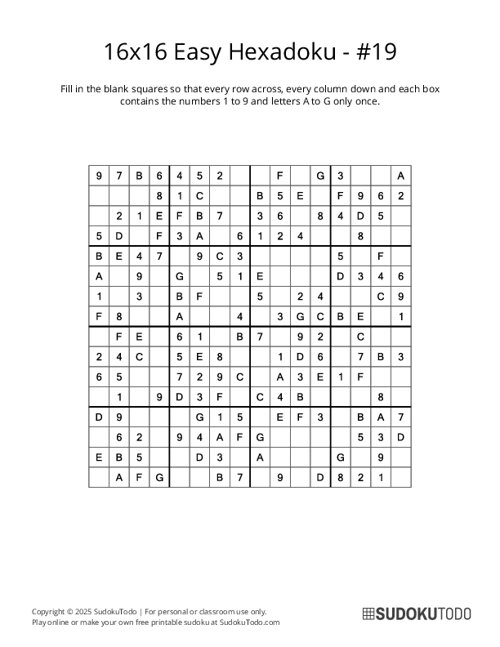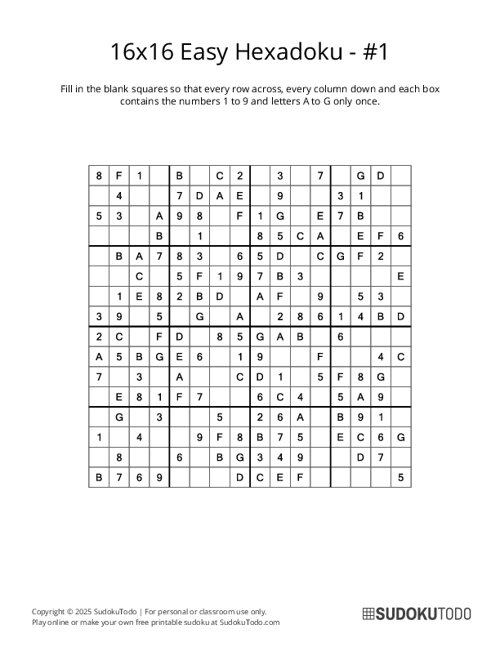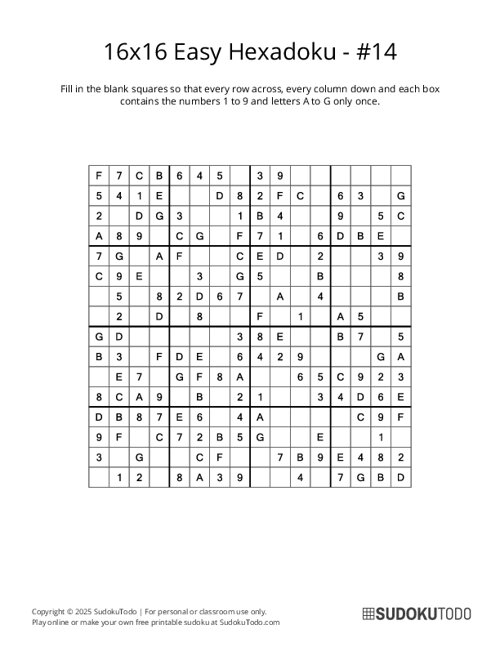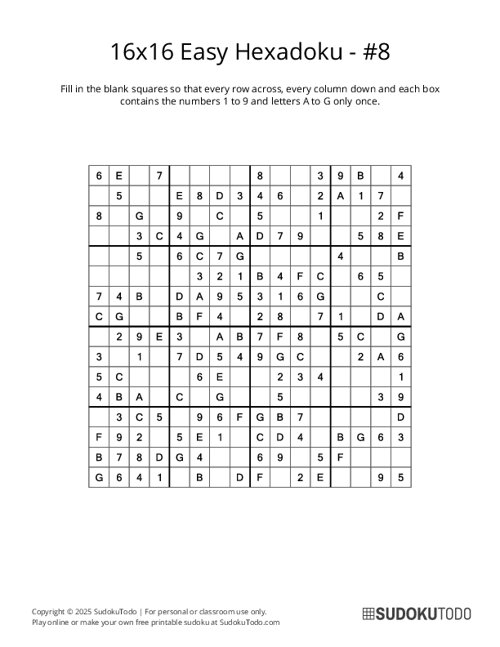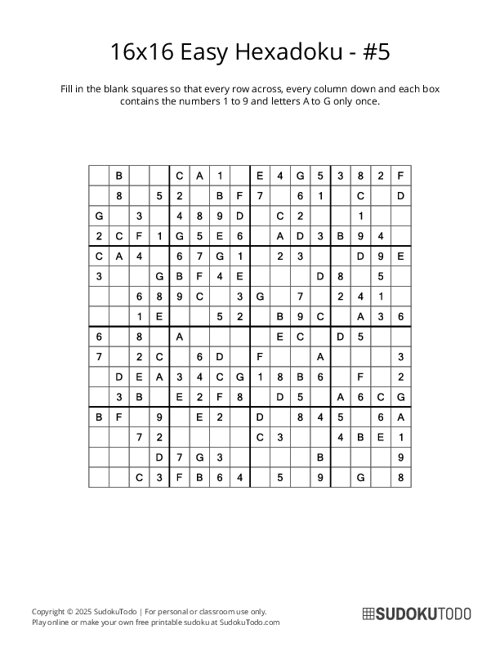Printable Sudoku
- Alphabet
- Battleships
- Binary
- Bridges / Hashi
- Chain Sudoku
- Consecutive
- Cross Sudoku
- Flower Sudoku
- Frame Sudoku
- Futoshiki
- Galaxies
- Greater Than
- Hitori
- Jigsaw Sudoku
- Kakuro
- KenKen
- Killer Sudoku
- Kropki Sudoku
- Little Killer
- Magic Squares
- Nonogram
- Odd Even Sudoku
- Outside Sudoku
- Rossini Sudoku
- Samurai Sudoku
- Sandwich
- Skyscraper
- Slitherlink
- Sohei Sudoku
- Star Battle
- Sudoku
- Sudoku for Kids
- Sudoku Mine
- Sudoku XV
- Sujiken
- Tripledoku
- Tripod Sudoku
- Twodoku
- Vudoku
- Windmill
Special Variations
Play / Solve
Easy Hexadoku Puzzles
Download free printable Hexadoku puzzles. A 16×16 twist on classic Sudoku, Hexadoku uses numbers 1-9 and letters A-G. Our printable puzzles come in easy levels and include answers to check your work. Download and print your Hexadoku puzzles today to improve your number-solving skills!
Showing 1-15 of 20 records
Sort by:
You are browsing category Hexadoku show all
16x16 Hexadoku - Easy - 12
16x16 Hexadoku - Easy - 7
16x16 Hexadoku - Easy - 11
16x16 Hexadoku - Easy - 18
16x16 Hexadoku - Easy - 17
16x16 Hexadoku - Easy - 10
16x16 Hexadoku - Easy - 9
16x16 Hexadoku - Easy - 20
16x16 Hexadoku - Easy - 16
16x16 Hexadoku - Easy - 3
16x16 Hexadoku - Easy - 19
16x16 Hexadoku - Easy - 1
16x16 Hexadoku - Easy - 14
16x16 Hexadoku - Easy - 8
16x16 Hexadoku - Easy - 5
Hexadoku / Hexadecimal Sudoku
Hexadoku, also known as 16×16 Sudoku, is an advanced variation of the classic 9×9 Sudoku puzzle. Instead of numbers 1-9, Hexadoku grids use hexadecimal digits: 1-9 and A-G. The rules remain the same as classic Sudoku; i.e. fill each row, column, and 4×4 region with unique symbols without repetition.
About Classic Sudoku Puzzles
Sudoku is a logic-based, popular number-placement puzzle. The Sudoku grid is divided into sub-grids called "boxes" or "regions." The goal is to fill the grid with digits from 1 to grid-size so that each digit appears exactly once in each row, column, and box.
Sudoku puzzles vary in difficulty, ranging from easy to expert, depending on how many digits are pre-filled and the complexity of solving them.
Basic Rules / How to Play
- Grid Size: The puzzle has 16x16 grid size made up of sixteen 4x4 sub-grids.
- Unique Numbers: Each row, column, and sub-grid must contain all digits from 1 to 9 and letters from A to G without repetition.
- Pre-Filled Numbers: The numbers given at the start of the puzzle must remain unchanged.
Solving Tips and Techniques:
- Most Pre-filled Numbers: Start with rows, columns, or boxes with the most pre-filled numbers.
- Scanning: Look for empty cells where only one number is possible based on the existing numbers in the row, column, and subgrid.
- Elimination: If a number can only go into one cell in a row, column, or box, place it there.
- Single Candidates: A cell that can only have one number is filled right away.
- Candidate Lists: Write all the possible numbers in each empty cell. As you fill in numbers, remove the ones that no longer work.
- Naked Pairs / Triples: If two (or three) cells in a row, column, or box can only have the same two (or three) numbers, remove those numbers from the other cells in that row, column, or box.
- Hidden Pairs / Triples: Find numbers that show up in only two or three cells in a row, column, or box, even if there are other possible numbers too.
- Guess and Backtrack: For very challenging puzzles, guess a number and follow through to see if it leads to a valid solution. If not, backtrack and try another possibility.
- Use pencil and paper: Use pencil marks to keep track of possible numbers in each cell
